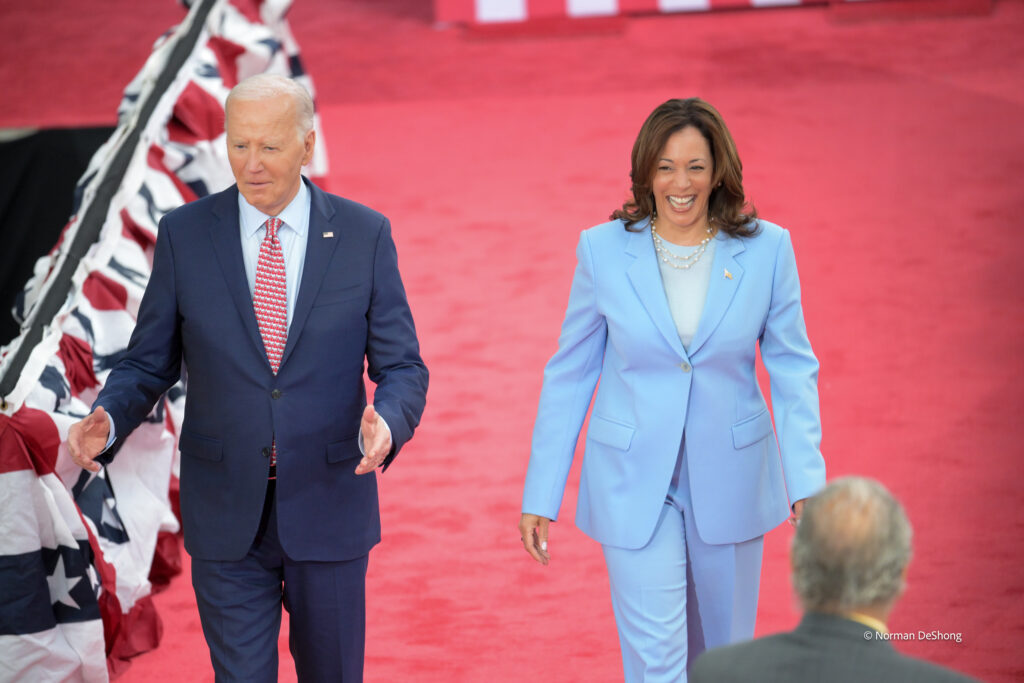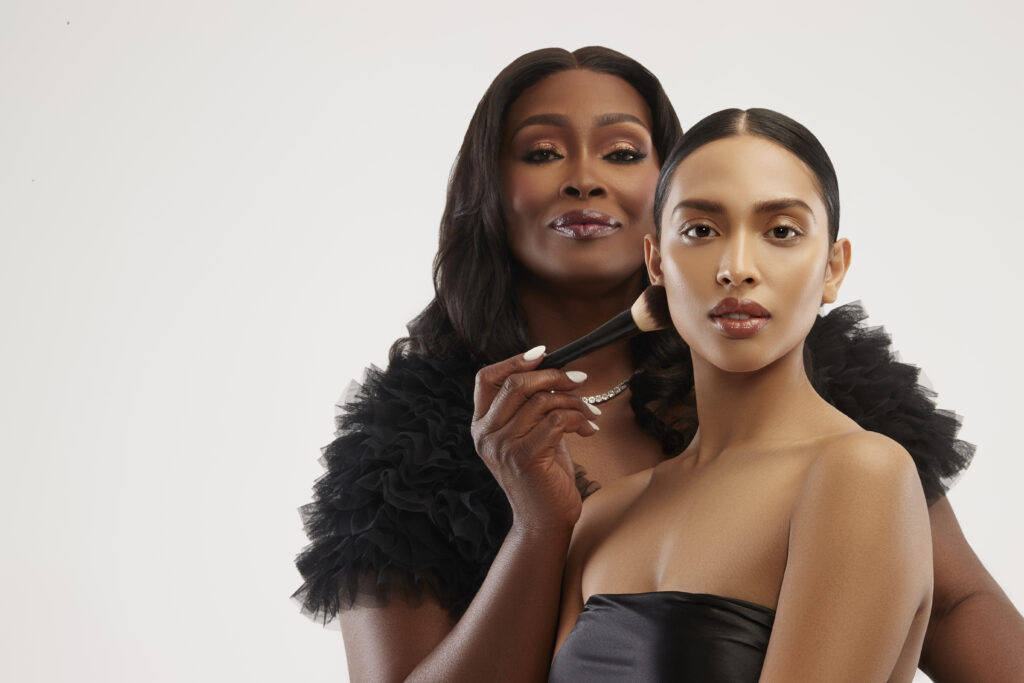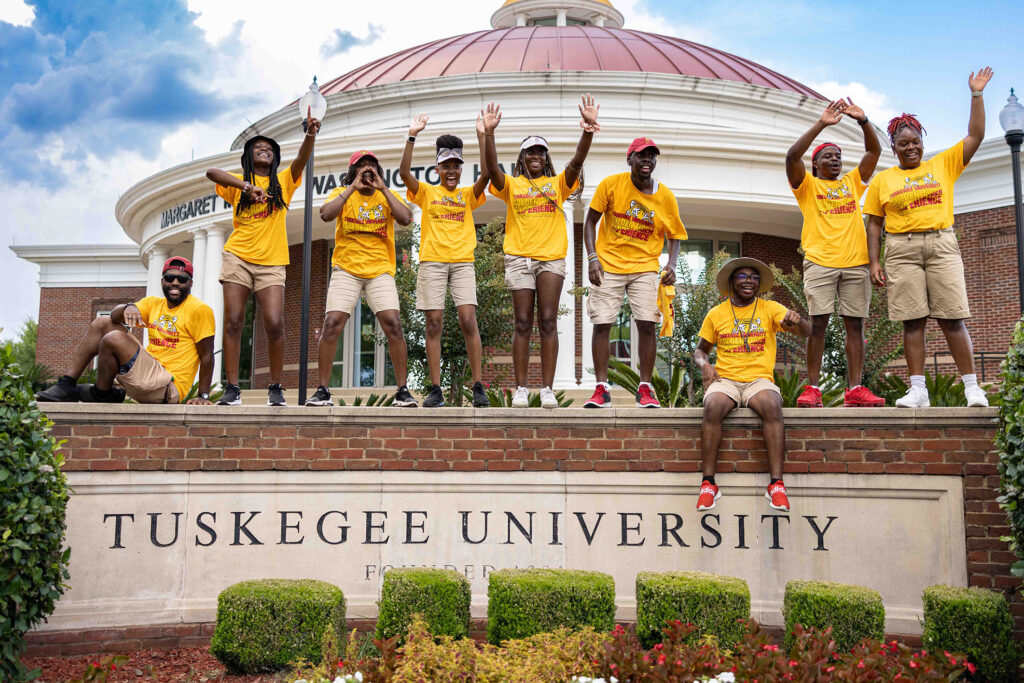A Day in the Life of Rodericka Applewhaite, White House Director of Black Media

Photo Credit Kevin Lowery
A lifelong desire to be involved in something that helps people, combined with a little bit of luck and audacity, eventually landed Rodericka Applewhaite a role that she never even imagined for herself. With a passion for politics and communication, particularly concerning the Black community, Applewhaite, Director of Black Media at the White House, understands the importance of ensuring that people who often feel left out or disenfranchised understand that their concerns are being addressed.
“Political implications impact everyone,” she tells the Buckeye Review. “What’s cool is that anyone truly has the opportunity to impact politics. I think people think it has to be this big, structured thing where you have to wear a suit, be on TV, and do all that stuff, but what it really is – is just being able to speak to your fellow person.”
The power of Black media plays a significant role in making the impact Applewhaite hopes to create.
“Not only is it targeting Black Americans, but it’s also speaking in a voice that is authentic and understood by the community,” she said. “That’s something that you can’t really replicate across legacy outlets. And so that cultural competency, that cultural understanding, that only really comes from being in the community yourself and being able to communicate the news through that lens is why Black media is so important, and it’s why we make sure that we’re creating specific access points for Black media to interface with the White House.”
Moreover, the first-generation American with roots in Panama and Guyana leans into her desire to prepare authentic communications by understanding the significance of how being politically in tune has shaped her worldview. She sees politics as a means to make things more accessible for everyone.
“It’s because of politics and the ways that people in power have worked to make things more accessible,” she said. “People like me, a first-generation American little Black girl from Georgia, gets to brief the president, do stuff like that, and bring in all of these outlets. And so that work is part of what makes it cool. And the fact that it can be accessible by everyone makes it cool to me, at least.”

While no day in a high-profile communications role mirrors another, Applewhaite takes charge of her days with an early start and a very late end, sprinkled with surprises in between.
During her second week in her role, she was surprisingly asked to brief President Biden personally before an interview.
“Obviously, I have ‘director’ in my title, but there are a few rungs in the ladder above me in the structure at the White House, so I figured for press that the president would be doing with Black media, I just thought I would be writing the memo so someone else could read it and was told that I would be presenting it myself to him. So that was definitely a big moment,” she said.
Here is a quick glimpse into a day in the life of Rodericka Applewhaite, specifically during campaign season in this major election year.
6:45 a.m. – Wake-up.
Applewhaite calls this a contradiction because she’s not a morning person, yet she consistently naturally awakens before 7 a.m.
“I spend about an hour catching up on emails, scrolling through my socials, and mentally preparing myself for the day ahead. Today [August 16, 2024] is pretty hectic, and I’ve been prepping for a few days. President Biden is designating a new national monument that will reflect on the Springfield Race Riot of 1908, a chapter of American history that holds particular weight in the Black community as it spurred the creation of the NAACP. Despite our press/comms team being about 50 people, I’m the one solely dedicated to Black media. Since I’ve booked over 100 press opportunities to amplify this milestone in President Biden’s legacy, it’s on me to make sure it runs smoothly.”
8 a.m. – Out of bed.
Still not a morning person, Applewhaite notes that 8 a.m. is when she “peels” herself out of bed, then it’s on to a shower and skincare routine.
“I do my best thinking in the shower, so I run myself through the press schedule I’ve set up one more time to make sure I logistically have the time to be on hand for all of the surrogates I have doing interviews today.”
9 a.m. – Drive to work, a.k.a answer reporter phone calls.
9:25 a.m. – Arrive at desk.
Hoping for an earlier start, but alas, her day begins a bit later than expected.
“I’m caught up enough, and no one is waiting on anything from me. My boss, Luisana (Coalitions Media Director), holds an impromptu check-in with me to see if I need any extra hands for what I have going on for the day. She’s also a one-woman operation as the person who manages our relationships with Latino media, so she knows I have a big lift ahead of me. But I declined the extra help this time since I was able to lay today’s schedule out in a way where there’s only one thing happening at a time.”

10 a.m. – 10-minute Oval Office run-through.
“The anchor event for the monument designation is a good old-fashioned proclamation signing in the Oval Office, which is a great visual opportunity to see President Biden in action. It’s a small room, so events like this are typically limited to the ‘pool,’ a rotating group of reporters from various outlets that follow and document President Biden’s every public move. Since this monument is of particular significance to the Black community, I petitioned for today’s pool to be expanded for Black outlets and was granted five slots.”
10:30 a.m. – Extinguish a small ‘fire‘.
The studio line is not working.
“A holdover from a rollout we were amplifying earlier in the week, President Biden and Vice President Harris’ prescription drug price negotiation deal that will lower healthcare costs for millions, I have one last interview on it booked. Chiquita Brooks-LaSure, Administrator for the Centers for Medicare and Medicaid Services, is supposed to be calling into The Earl Ingram Show in Wisconsin, but her staff tells me the line doesn’t seem to be working. I check to confirm I didn’t give the wrong number and then call Earl. These things happen all the time. The number finally connects, and Chiquita’s hit begins.”

11 a.m. to Noon – Working with reporter.
Late reporter arrival.
“We’re getting close to the time I need to escort my reporters into the Oval Office, and only 4 out of 5 are in my holding area. The missing one is the only one who flew in for this, so I start to get nervous that she will get here too late and call her to get an ETA. She arrives just in time, and I literally run to the press check-in gate to walk her to the hold. In the hustle, a piece of her equipment got stuck in the security scanner machine. The first time I go back, I look everywhere in the room and come up empty, and then return a second time to demand a secret service check inside the [security] machine itself, and there it is. I’m sure that’s a metaphor for something.”
- Karine Jean-Pierre wants to personally greet key stakeholders here today: “I escort them to her. Luckily, a key stakeholder who is supposed to be in the room with the president during the signing is also behind schedule, so I’m just pacing in the West Wing, waiting for my signal to collect my reporters. In that time, I walk in on a discussion about ensuring a touch happens between Karine Jean-Pierre and that stakeholder since she asked for it, so I offer to get him once he arrives. I track him down once he’s past security and walk him to her office. It’s a quick greeting; once done, I escort him back to the Office of Public Engagement staffer.”
- Move press to Oval Office: “It’s time! I walk my reporters into the Oval Office. It’s my first time seeing something like this so up close, so I turn into a reporter myself, trying to document as I can on my phone so I have the memories. It’s easy to develop a certain sense of [sightlessness] in this job because everything is cool and dripping in centuries of history, but this is a moment I want to make sure I take in not as a staffer but as a Black American citizen who is having the shared struggle of her community legitimized in such a strong way.”
With a hectic schedule and unpredictable events, the day ahead for Applewhaite doesn’t skip a beat with a whirlwind of media coordination, unexpected challenges, and Oval Office excitement.
- Noon – Move the press to the briefing room; huddle on opportunities to increase access
- 12:30 p.m. – Gaggle #1 begins with Illinois delegation at the sticks
- 12:47 p.m. Gaggle #2
- 1 p.m. – Gaggle #3
- 1:20 p.m. – Event done! Back at desk.
- 1:30 p.m. – Intern farewell 🙁
- 2:40 p.m. – 20-minute lunch
- 3 p.m. – Call with new touch
- 3:30 p.m. – Community advocate call
- 3:52 p.m. – Start making way home between meetings
- 4:05 p.m. – Treasury meeting
- 5 p.m. – Arrive at boyfriend’s to collect shoes I need for the DNC in Chicago
- 6 p.m. – Drinks
- 7 p.m. – Friend calls
- 7:15 p.m. – Dinner at my place
- 8 p.m. – Start DNC prep
- 2 a.m. – Bed
With only a few hours of sleep under her belt, Applewhaite is back at it as the sun rises, ensuring equity for Black journalists while fostering a more inclusive dialogue with the White House.




